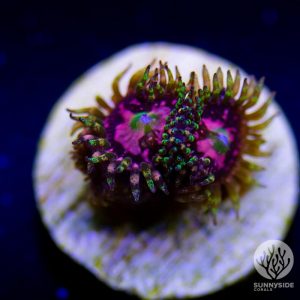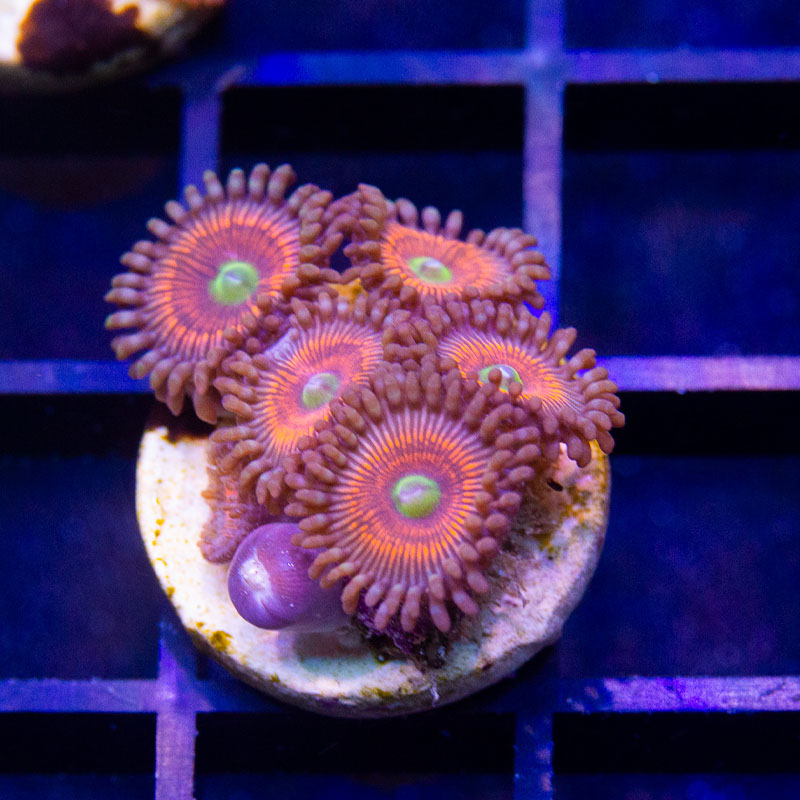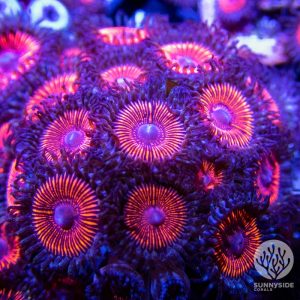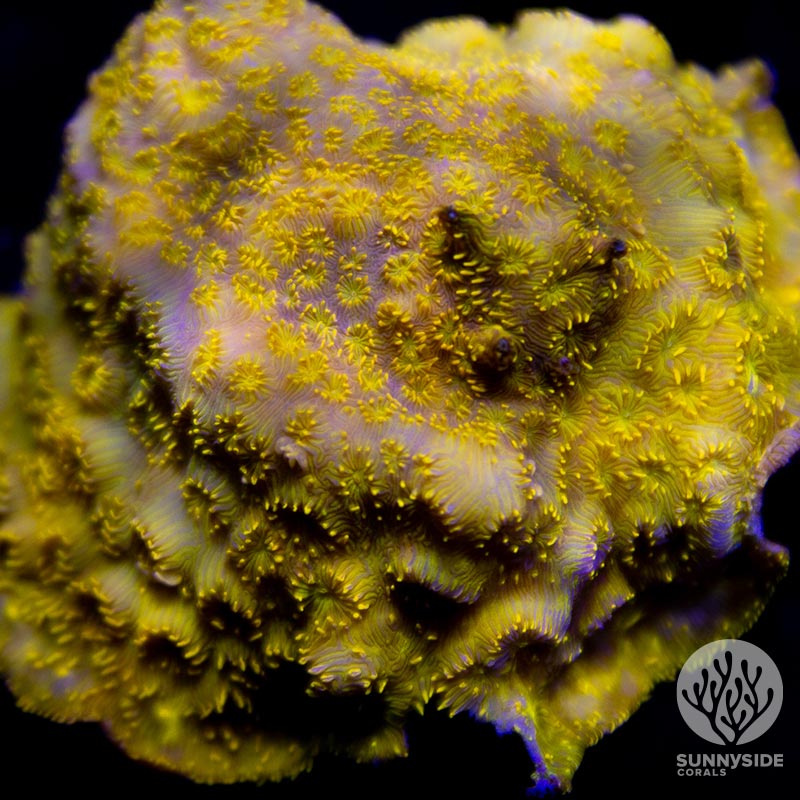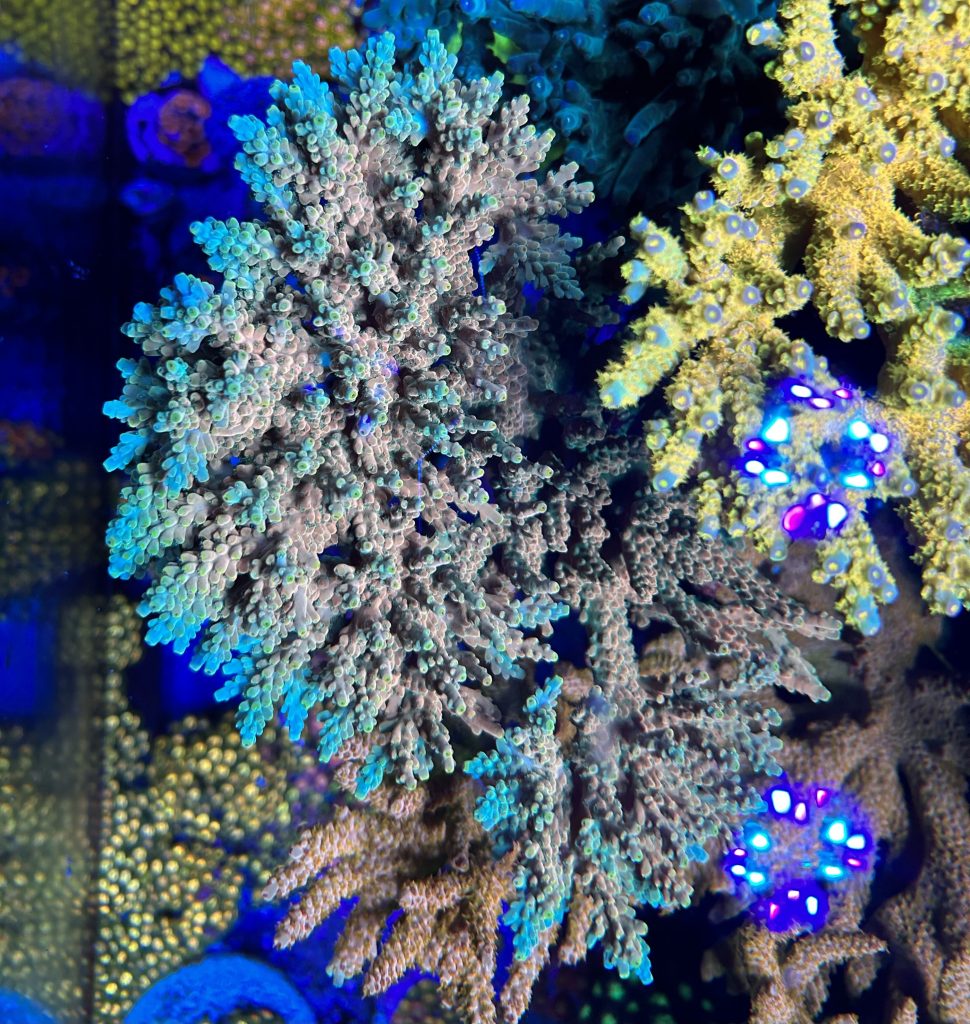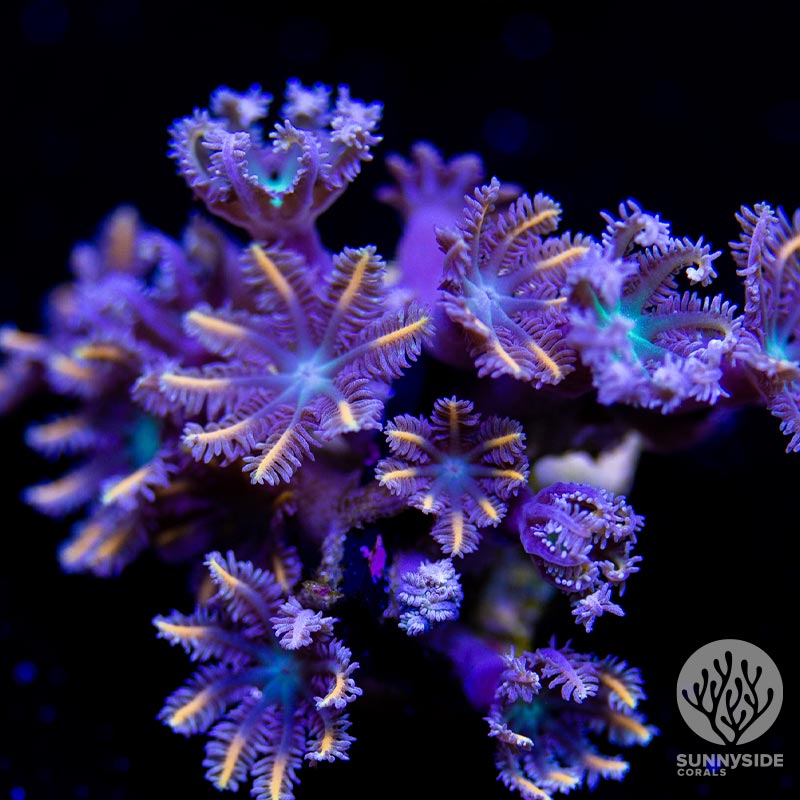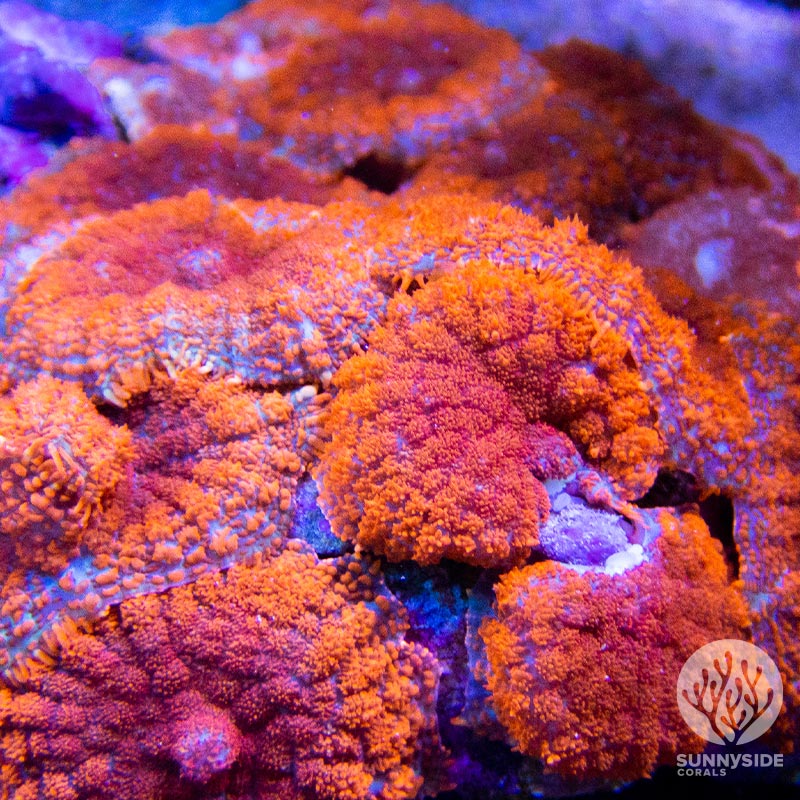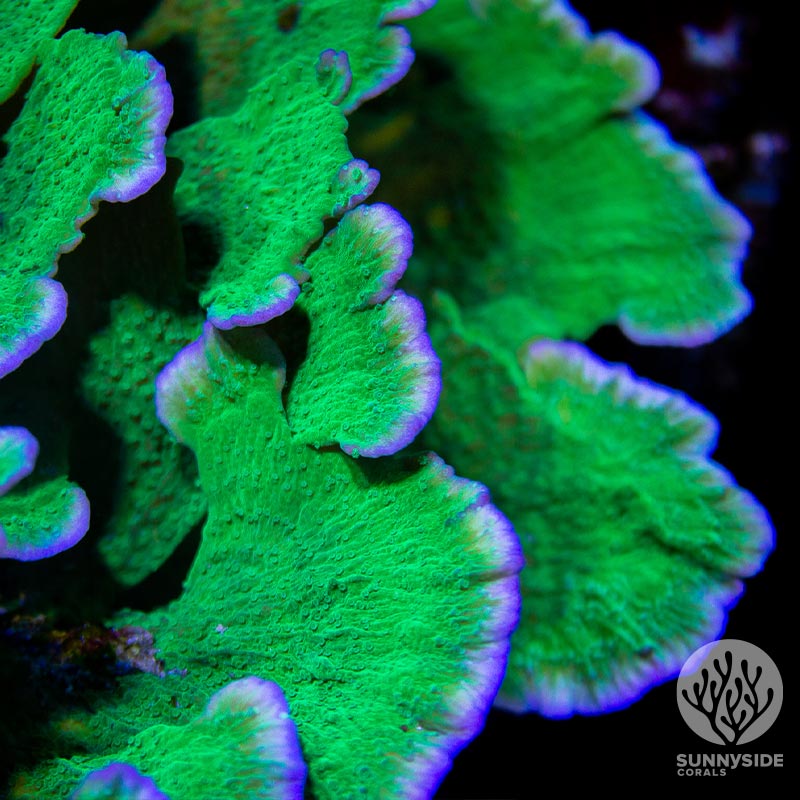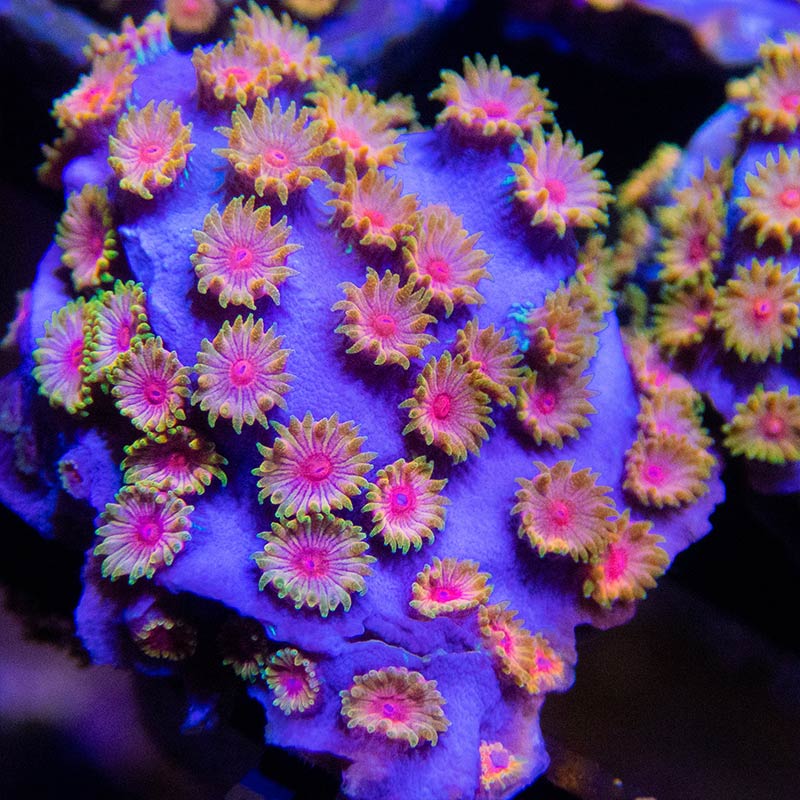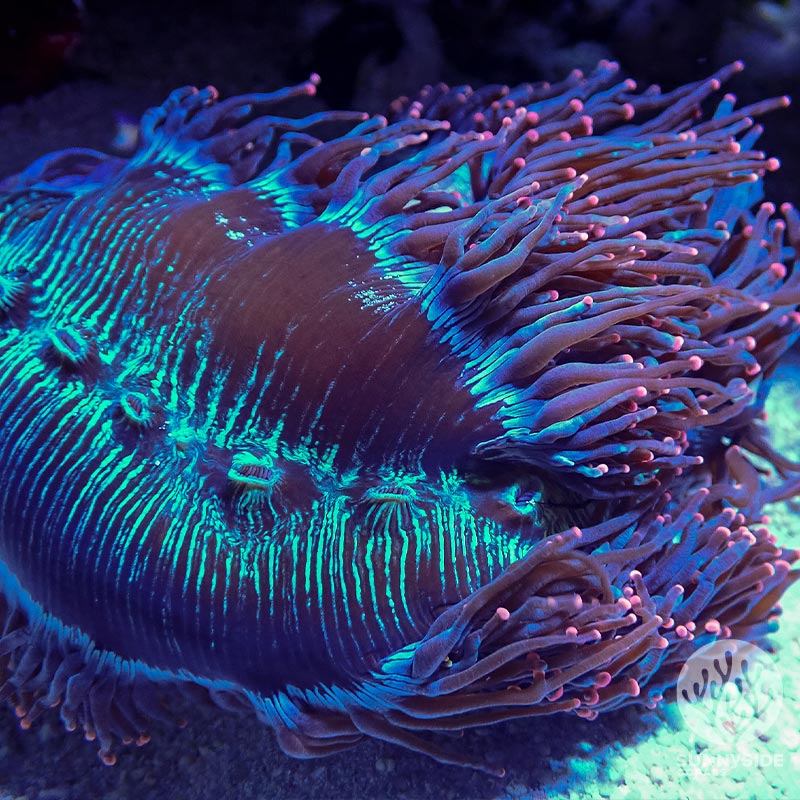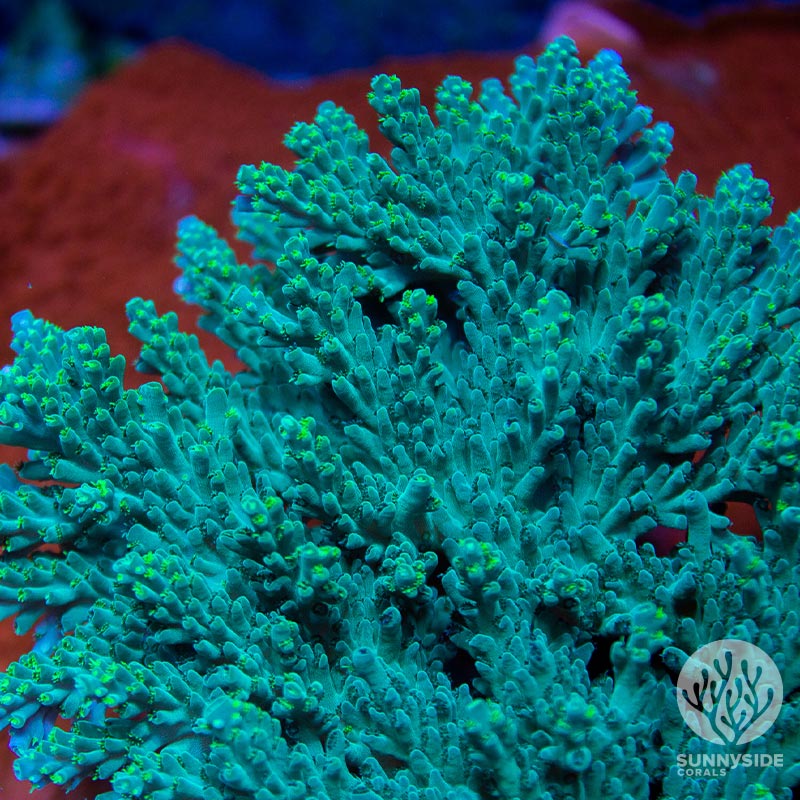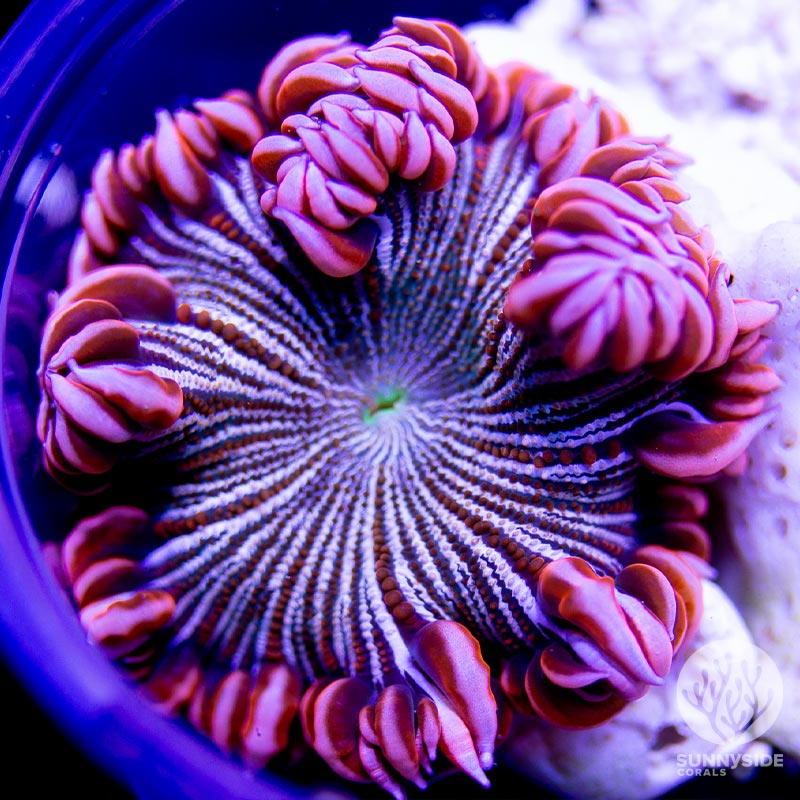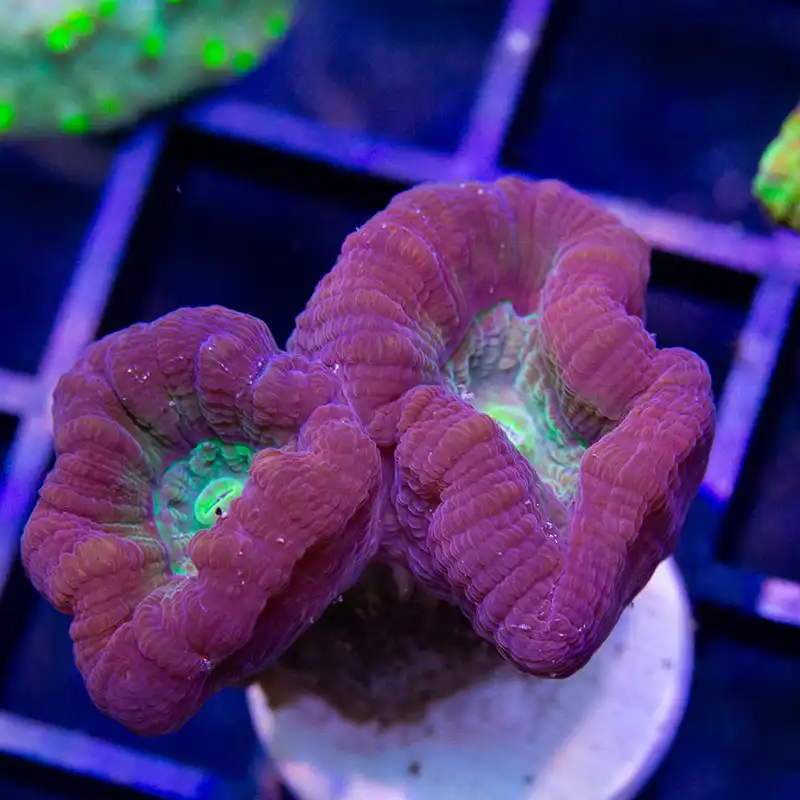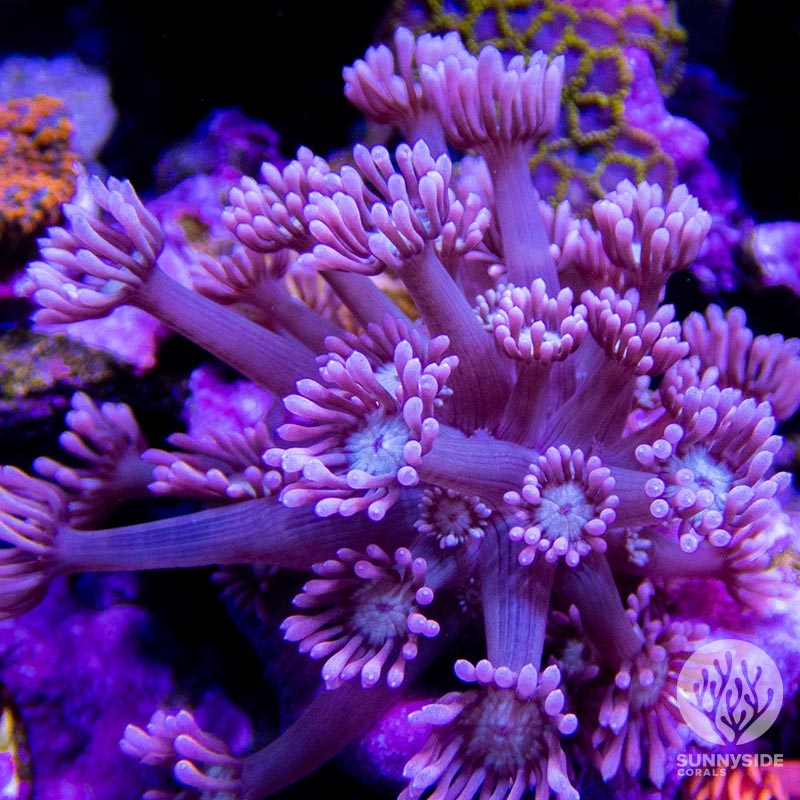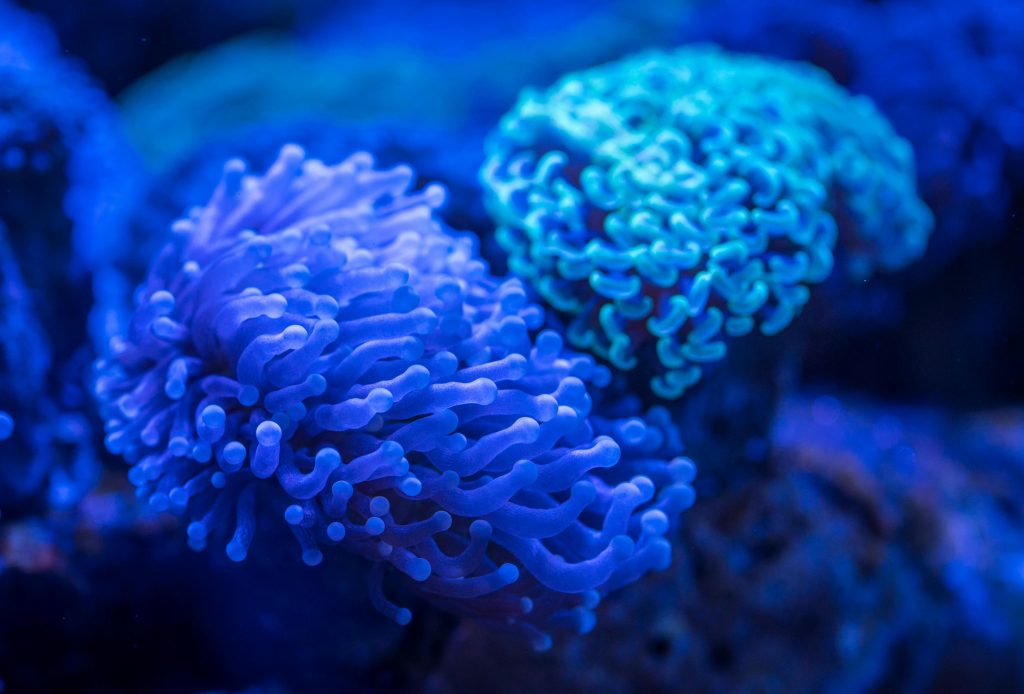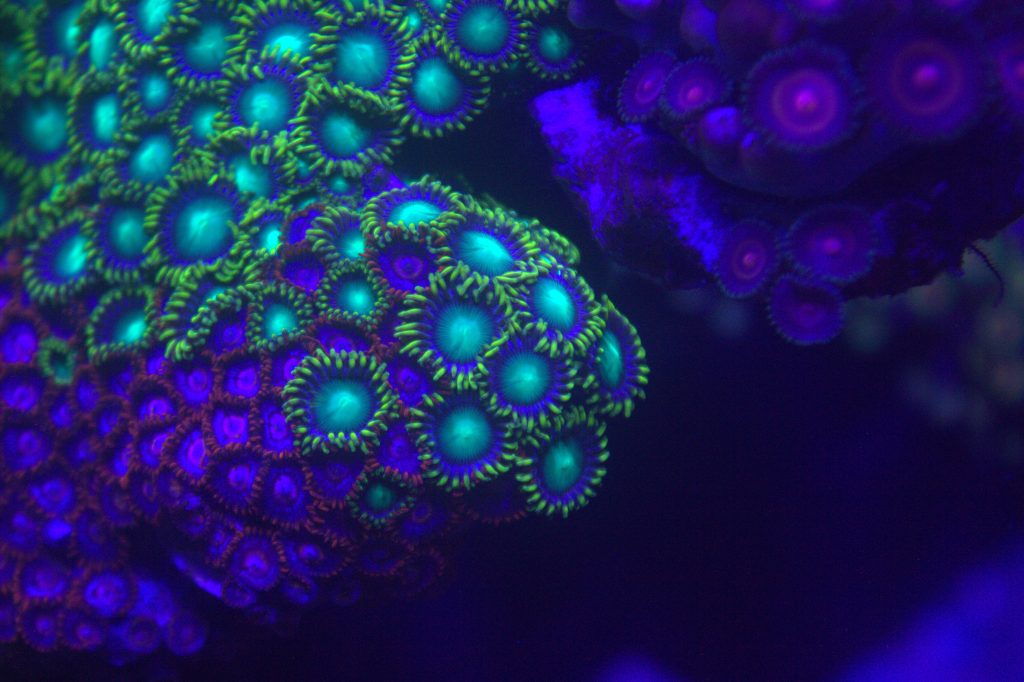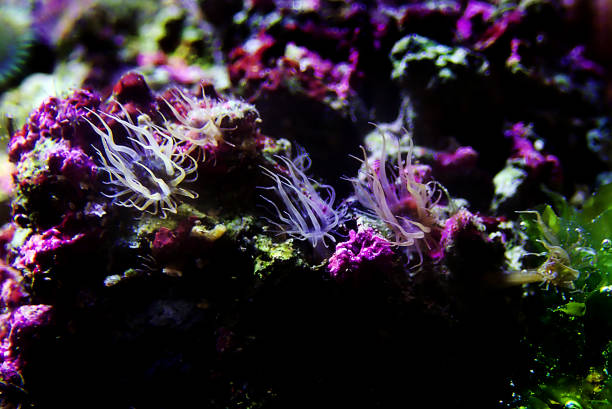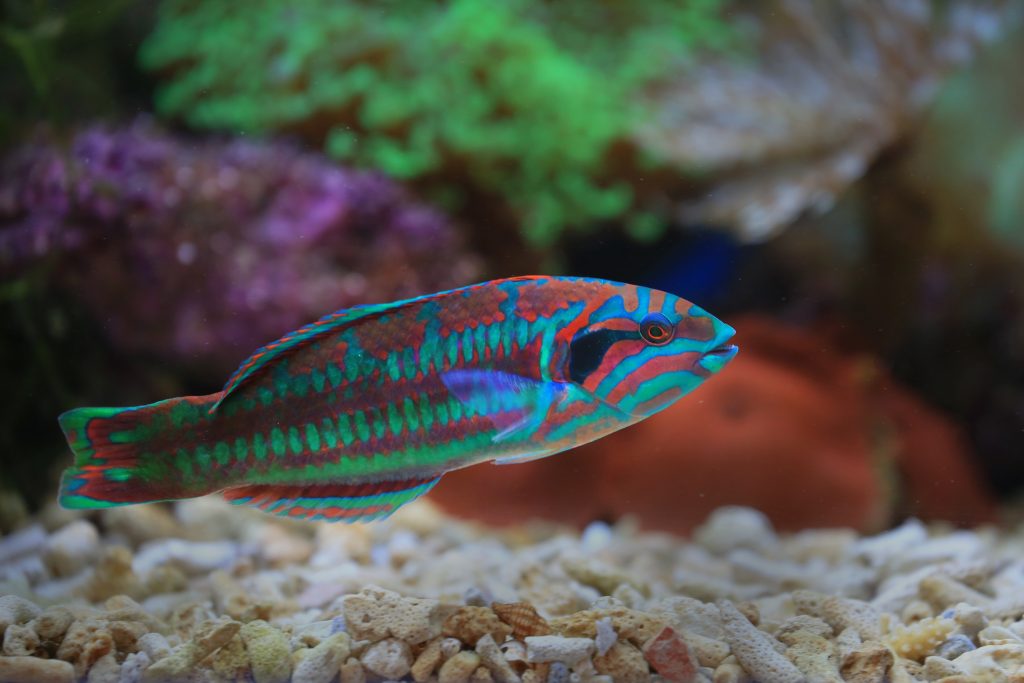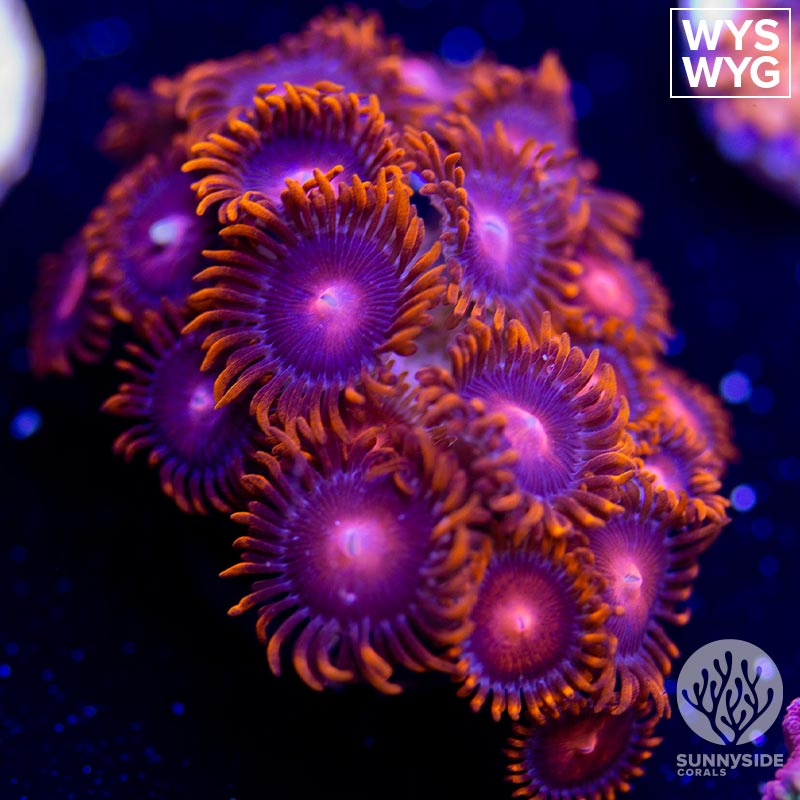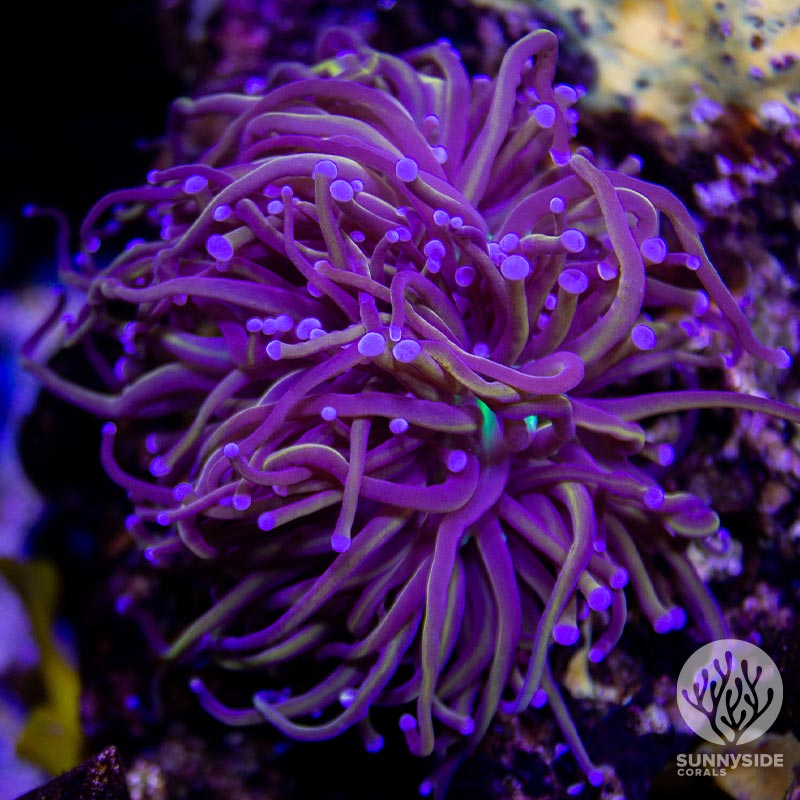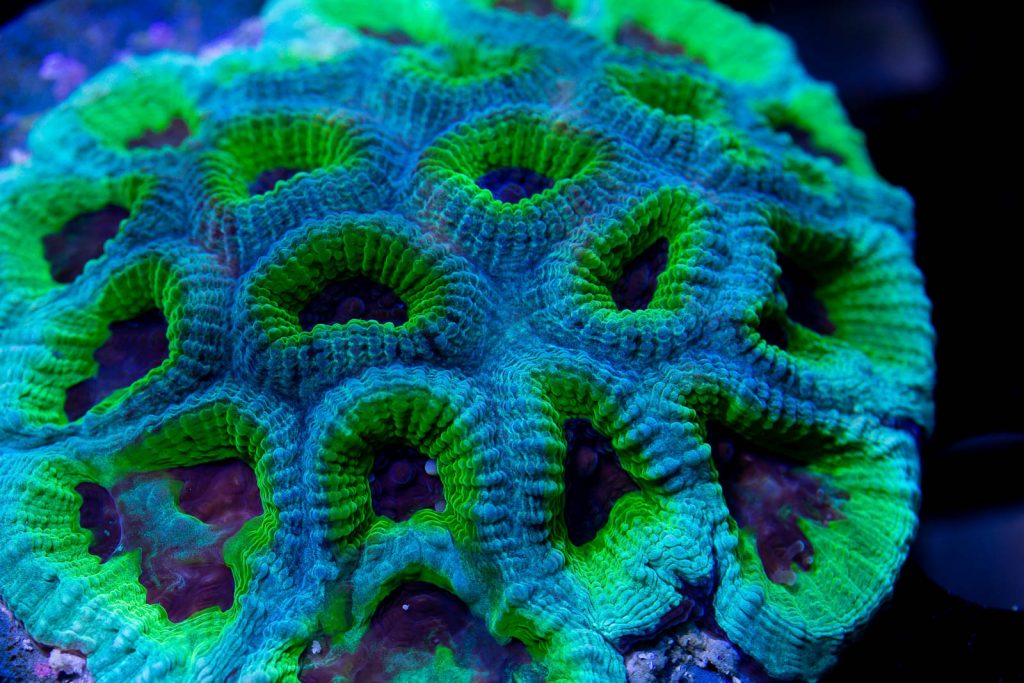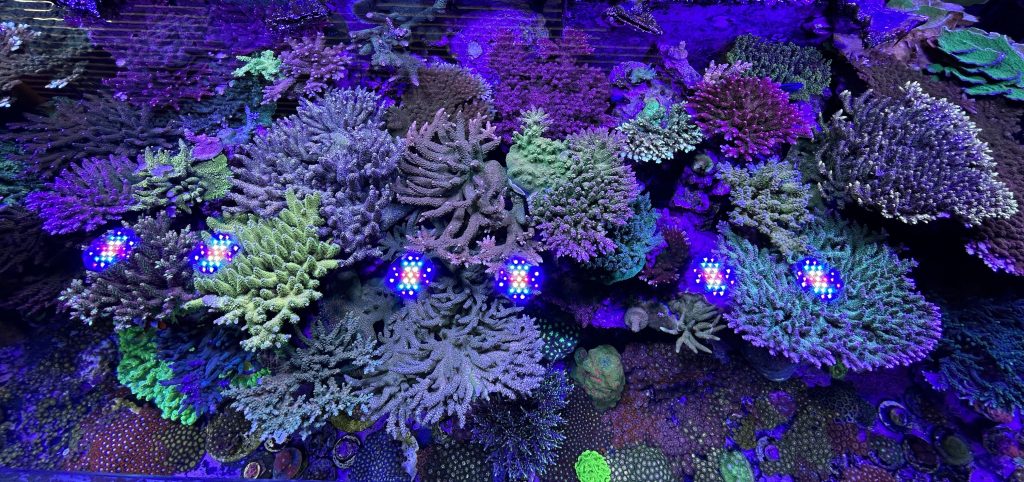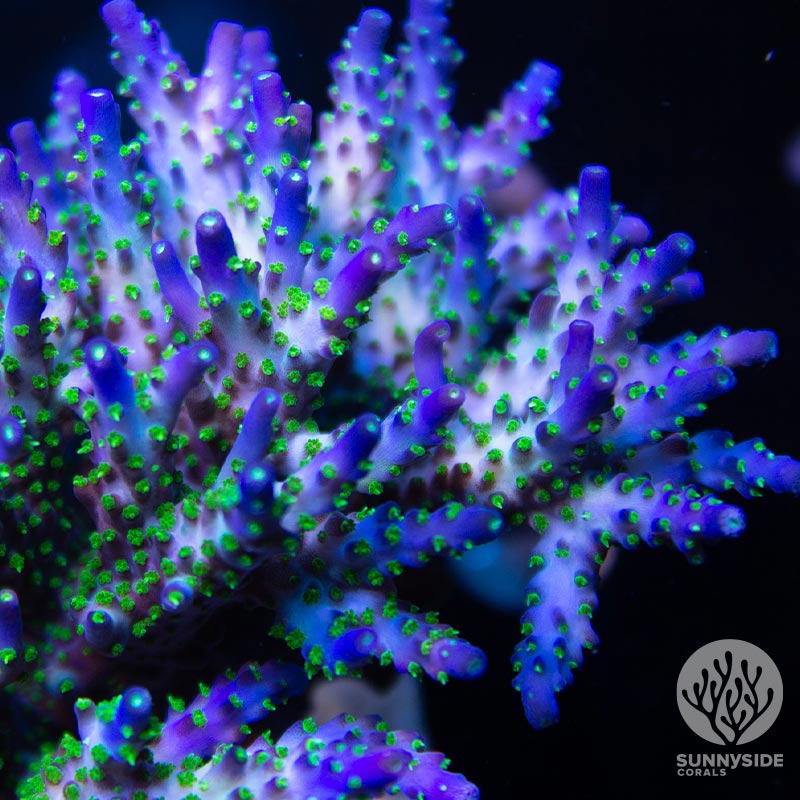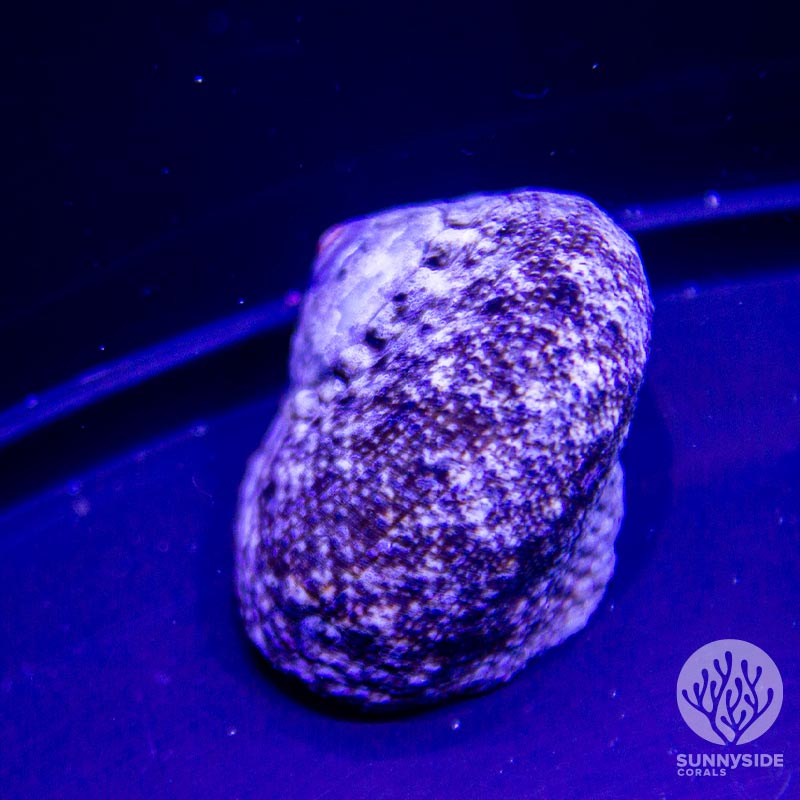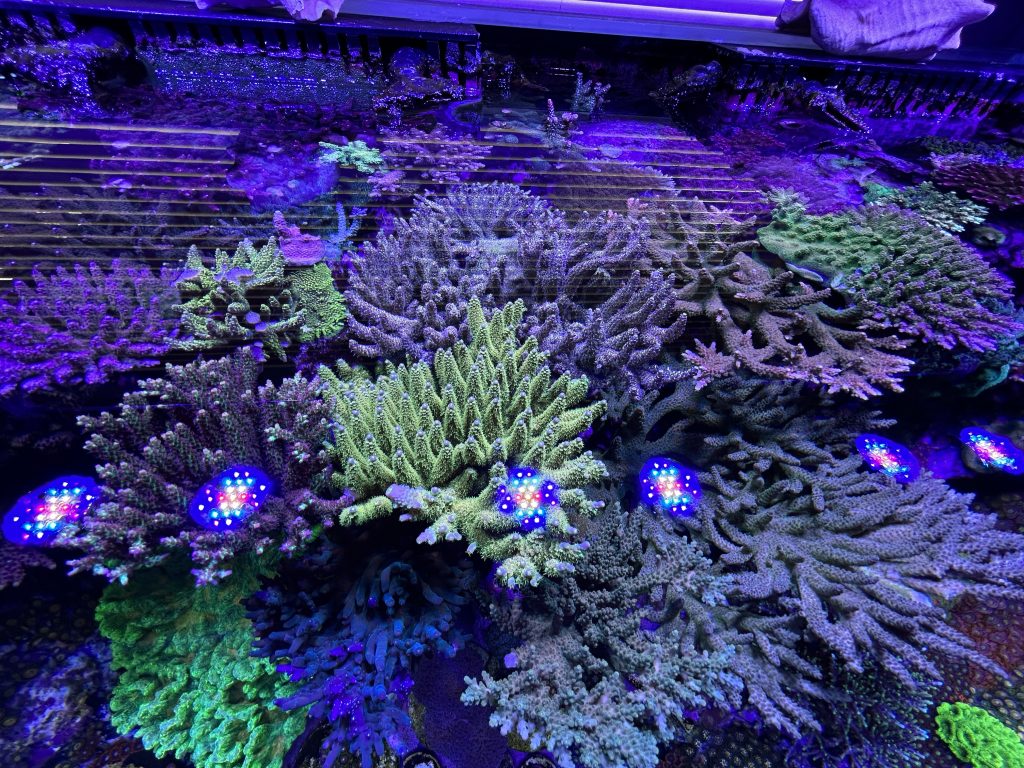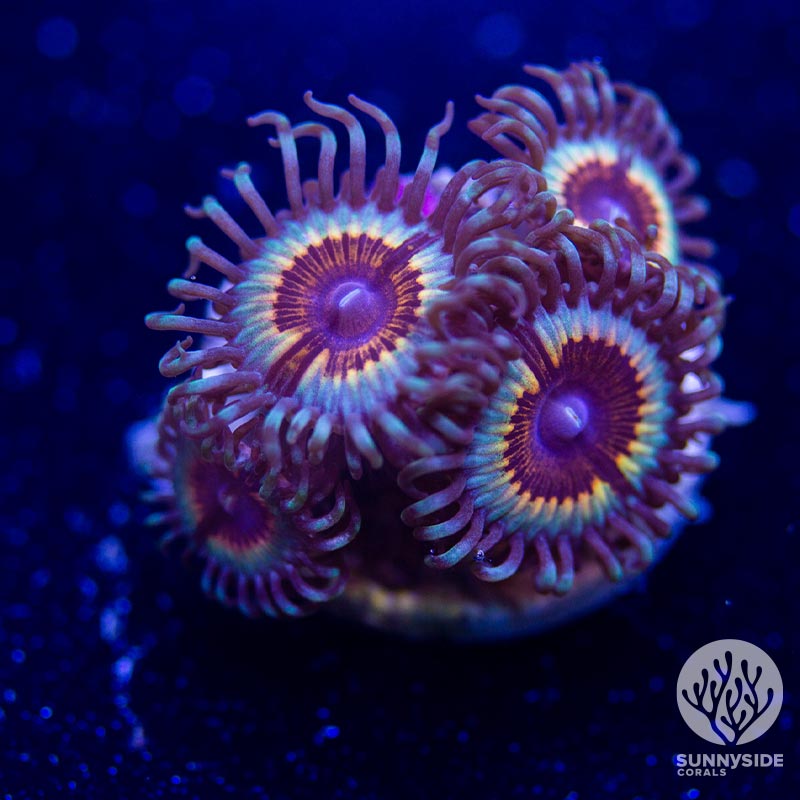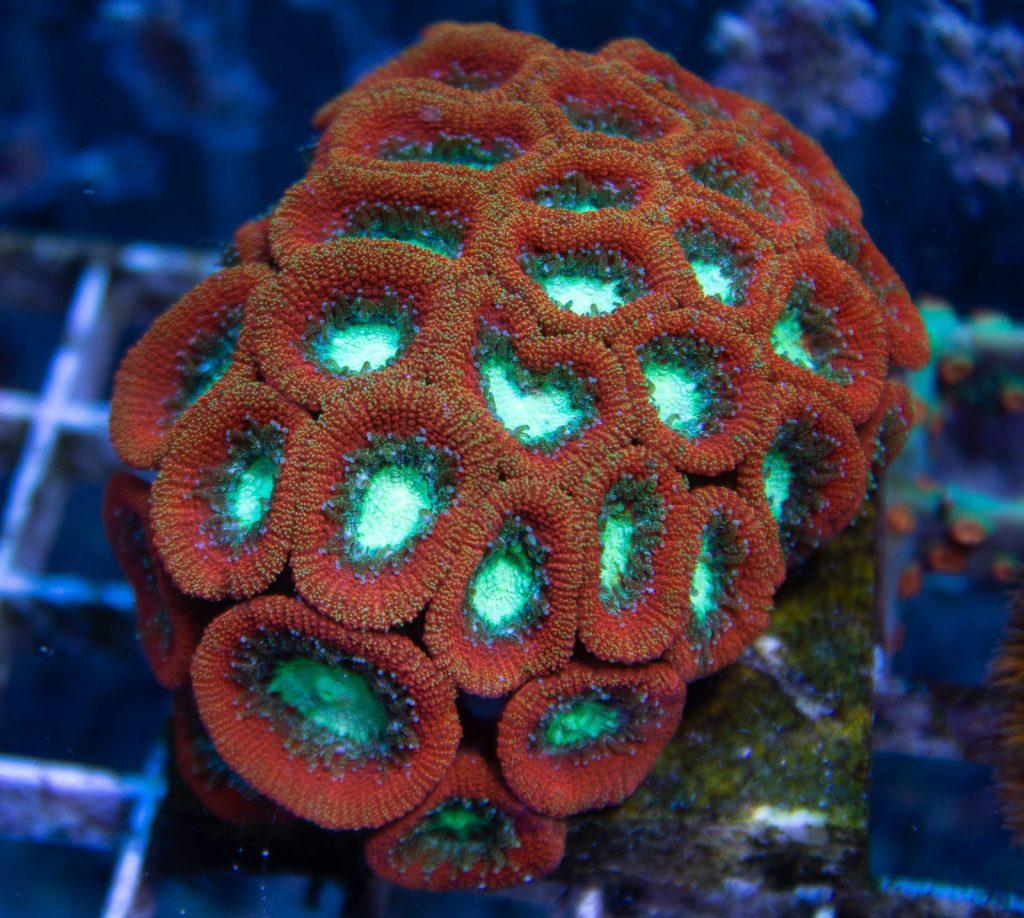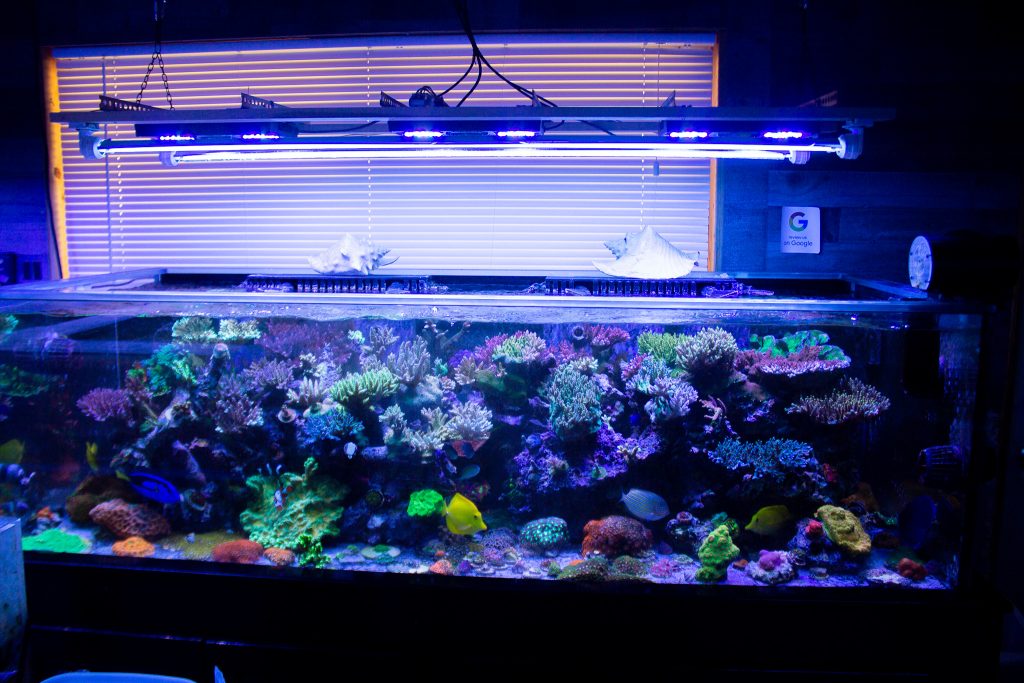Zoanthid Coral Care Overview:
Common Names: Zoas, Button Polyps, Carpet Coral
Latin Name: Zoanthus (genus), Palythoa (genus)
Difficulty Level: Beginner
Colors: Virtually unlimited; available in a wide variety of colors and patterns, including rare and highly sought-after morphs like “Sunny D’s,” “Utter Chaos,” “Rastas,” and “Blue Hornets.”
Temperament: Peaceful. Zoanthids are generally not aggressive and can be placed near other corals without risk of stinging. However, they can grow over other corals if left unchecked. Some Palythoa species contain palytoxin, a dangerous toxin that requires careful handling.
Growth Speed: Medium – Fast. Growth rates vary greatly among different species and depend on water parameters, lighting, and tank conditions. Some zoas can grow 5-6 polyps per month, while others are slower.
Tank Placement: Low to high in the tank, depending on lighting and flow preferences. Zoanthids can adapt to a variety of conditions but should be placed where they receive appropriate light and flow.
Lighting Intensity: Low to High (30-200 PAR). Zoanthids can tolerate a wide range of lighting conditions. Medium light (around 100-150 PAR) is generally optimal. Acclimate them slowly to higher light to prevent bleaching or stress.
Water Flow: Moderate to high (indirect flow). Strong, consistent water flow helps prevent detritus buildup and keeps the coral clean. Avoid direct, high flow that could damage the coral’s tissue or hinder food capture.
Temperature: 77°F – 84°F (25°C – 29°C), with 82°F (28°C) being optimal. Zoanthids can tolerate a range of temperatures, but stability is key.
pH: 8.0 – 8.4, ideally around 8.2-8.3.
Nitrate: 5-10 ppm, keeping levels stable.
Phosphate: 0.05-0.1 ppm, keeping levels stable.
Alkalinity: 8-9 dKh. Although Zoanthids are soft corals and do not consume calcium/alkalinity for skeleton-building, maintaining stable alkalinity is beneficial for overall tank health.
Calcium: 400-450 ppm. While Zoanthids do not require calcium for skeleton formation, balanced calcium levels support a healthy environment.
Feeding: Not required but beneficial. Zoanthids can derive nutrients from photosynthetic zooxanthellae and dissolved organics in the water. Supplemental feeding with small frozen foods (e.g., mysis shrimp, cyclops plankton) or powdered plankton can enhance growth, coloration, and overall health.
Propagation: Easily propagated by fragging, but caution is needed due to potential palytoxin exposure. Use gloves, goggles, and avoid boiling rocks that have Zoanthid colonies to prevent airborne palytoxin
More About Zoanthids
Zoanthids are one of the most popular types of soft corals. At Sunnyside Corals we keep a wide variety of Zoanthids as they tend to be good growers, easy to keep, and come in just about every color combination you can imagine. Most Zoanthids, or Zoas, are perfect for any beginner tank. For those of you that are ready to start growing Zoanthids in your systems, here is a guide to everything you need to know about Zoa coral and its care.
- What are Zoanthids
- Zoanthid Coral Care
- Things to know before you buy Zoanthids
- When can I add Zoas to my tank?
What are Zoanthids
Zoanthids can be found in coral reefs around the world such as; Fiji, The Great Barrier Reef and Tonga. Zoas come in limitless color variations and in many different sizes. When sold, typically prices will be listed based on the number of polyps on a frag. Oftentimes, when people refer to Zoanthids they are typically talking about Zoanthids or Palythoas.
Zoanthid Coral Vs. Palythoa Coral
Palythoa corals are very similar to Zoas. The main difference between them is that Palys are typically a little bit bigger and less colorful. However, sometimes the difference is almost too small to tell.
With their larger size, the species of palythoa coral that contain palytoxin can be more toxic when cut or agitated. We recommend wearing gloves and safety glasses when handling either variety.
Zoanthid Coral Care
How we manage our systems
Zoa polyps can triple or quadruple in size depending on how happy they are with the tank’s parameters. Another benefit of zoa corals is that they are also very adaptable. While this does not mean that you can constantly change their environment, it does mean you have a little more breathing room when it comes to finding the right lighting, flow, and nutrient levels for your tank as they will typically bounce back.

Lighting
Quality lighting is extremely important for growing Zoanthids and getting good coloration. Zoas will easily adapt to nearly any lighting, but you can expect some difference in appearance depending on the setup and intensity.
At Sunnyside Corals, we grow all of our corals under both T-5 lighting and Radions. We run our lighting on a modified AB schedule with our T-5s and Radions. Our PAR levels sit around 100-150 and our Zoas sit near the bottom of our tanks to assure that they are not getting too much light. As mentioned before, sometimes a little higher light can help bring out the colors in your Zoas, but you do not want to overdo it. Lighting that is too bright risks causing damage to your corals. If your zoas start to turn lighter or bleach out, it is time to move to a dimmer location.
All lighting experimenting should be done very slowly. For more help on lighting, you can see our exact light set up and schedules on our tank lighting post.
Water Flow Requirements
Zoas can handle a wide variety of flow but generally do not need a lot of flow. Having the right amount is important to keep sand and detritus from settling on your zoanthids and stunting growth or even killing them. It also allows them to eat by passing nutrients constantly over their heads in order to catch different foods. We try to give them a medium amount of flow and run our systems with a mix of MP10 and MP40 pumps.
How to place Zoanthids
Make sure to place your Zoas close to the bottom or middle of your tank where it does not recieve too much light. Typically somewhere where the Zoa can receive indirect flow is best, not directly under a pump. Too much flow makes it difficult for the polyps to open. You will know if they are happy when they are able to open and fully extend without having to stretch.
Zoanthids will grow almost anywhere and will cover what you place them on. This can add a lot of depth and variety to your tank. Some people put zoas on the back wall of their tanks or leave them to cover the ground or rocks in their tanks. As your zoas grow, they often become referred to as a Zoa Garden. Be creative and have fun watching your Zoas add some color to your tank
How to feed Zoas
Zoanthids do not actually need to be fed in order to grow and be kept happy. However, they do love to eat and enjoy a variety of foods. While they are capable of capturing their own food, feeding them periodically can result in a happier coral that grows at a much better rate and increases their color.
Due to the size of our systems, we broadcast feed rather than target feed. We use automated pellets to set our baseline and supplement that at random with a variety of frozen foods. Some of those include: LRS reef frenzy frozen food (pe calanus), Hikari (spirulina brine shrimp). We also use some powder foods that are more beneficial to zoas. These include reefroids, reef chili, avast reef jerky, and benepets. We will also use nori and flake food occasionally. There’s no setfeeding schedule, but typically we’ll supplement with frozen once a week, then a few days later we might use powder, and then a few days laters do flakes/ nori.
Occasionally we also dose with aminos. All of this is based on our current algae levels. If algae levels are high then you are overfeeding. Lastly, we use Kent’s Lugol’s solution (iodide supplement) at half the recommended dose for the benefit of our Zoas.
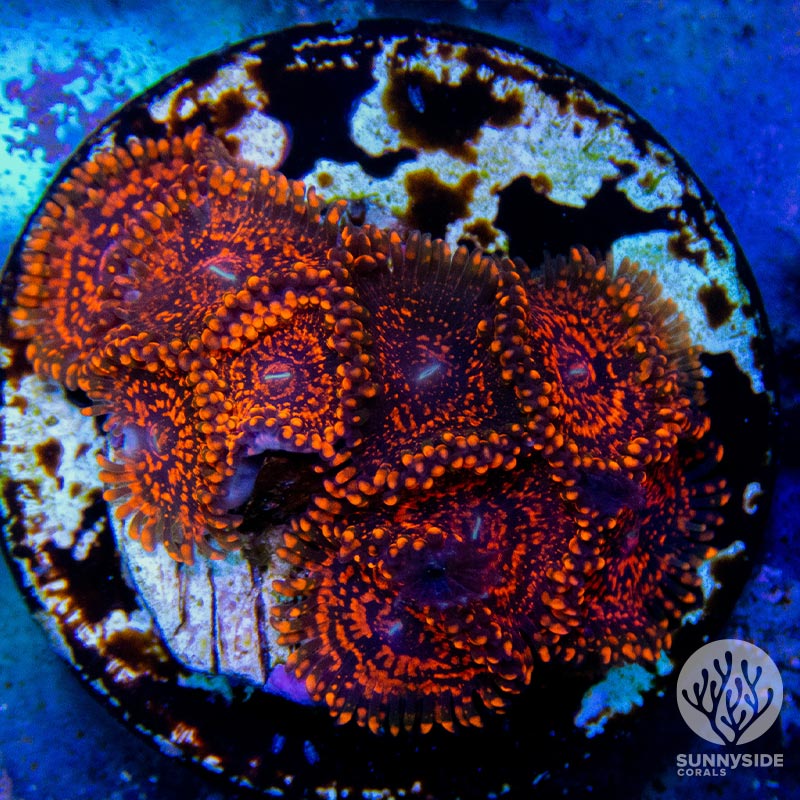
Water Parameters
Water parameters are always a key part of growing any coral. Zoas do fairly well with some water parameter fluctuation but overall you will have the most success if you keep your levels stable.
You do not have to worry as much about calcium, alkalinity, or magnesium with Zoanthids as you do for corals such as Acroporas. It is recommended that these levels be kept at a closer consistency to natural sea water levels. A standard “clean tank” should keep levels as follows:
- pH: 8.0 – 8.4, ideally around 8.2-8.3.
- Nitrate: 20-25 ppm, keeping levels stable.
- Phosphate: 0.03-0.05 ppm, keeping levels stable.
- Alkalinity: 9
- Calcium: 420
- Magnesium: 1400
- Salinity: 1.025
Zoas can also do well in a “dirty tank” where the Nitrates and Phosphates are slightly elevated. Some people claim this helps to bring out the best colors in the Zoanthids as well.
At Sunnyside Corals, we run a small higher nutrient system where our phosphates are .03 and our nitrates are at 25. However, we also run a lot of our zoas in a “clean tank” with our acros, where those levels are close to 0 and they are just as happy and healthy.

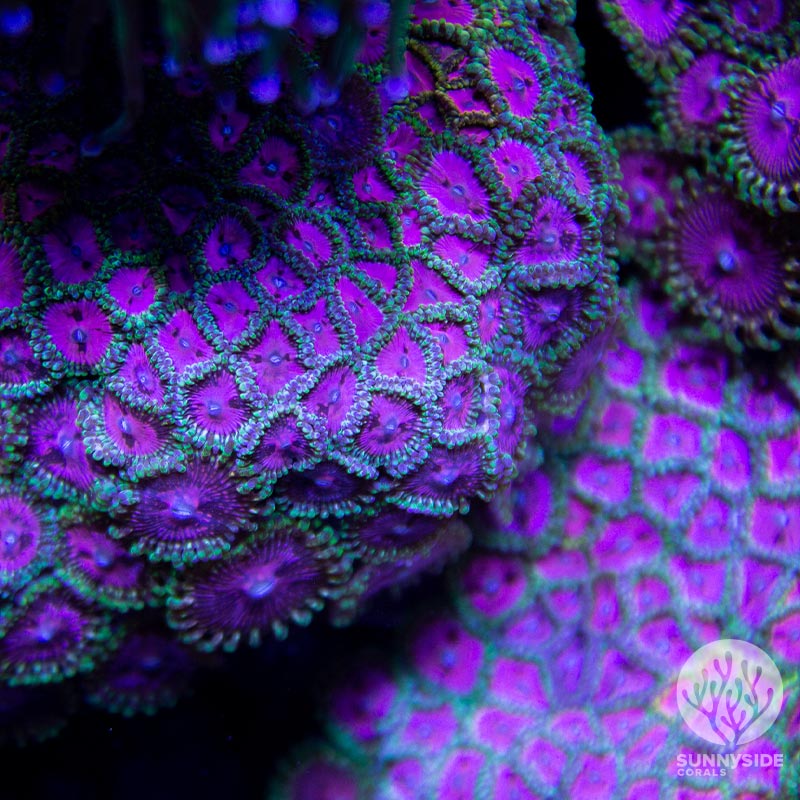
Common Issues and Trouble-Shooting
Zoanthids are known as one of the fastest growing corals in the world because of their adaptability and lack of skeleton structure. That being said, different strains will grow at different rates. Ultimately, the key to increasing Zoanthid growth in your tank is to make sure your tank is consistent. Once you find a spot in your tank where your corals are happy, do not move them. If you keep your parameters consistent and have adequate light and flow, your corals will start to thrive
Palytoxin
Palytoxin is a toxic chemical that is produced in several species of zoas. It is recommended that you handle Zoanthids with care and use protective wear such as protective eyewear and gloves when handling them. Palytoxin is something most hobbyists never have to deal with typically. Some key things to know in order to avoid palytoxin issues. Never boil zoas or palys to try and kill them. This is the number one way to release palytoxins that can cause neurological damage if it is inhaled or ingested. When cutting or scrubbing your zoas and palys be aware of any cuts or anything that gets in your eye. Immediate wash out the cut or eyes if this happens to avoid any palytoxin damage. If you are not cutting, ripping or boiling polyps you most likely will never have any issues with palytoxins. This is why Zoas still remain one of the most popular corals among hobbyists. They are safe to have in your tanks and homes and not something to worry about, it is just good to be aware it exists.
How to Increase Zoa Growth
Zoanthids are known as one of the fastest growing corals in the world because of their adaptability and lack of skeleton structure. That being said, different strains will grow at different rates. Ultimately, the key to increasing Zoanthid growth in your tank is to make sure your tank is consistent. Once you find a spot in your tank where your corals are happy, do not move them. If you keep your parameters consistent and have adequate light and flow, your corals will start to thrive
How to Handle Polyps Not Opening
Some Zoa corals may take a couple of days or weeks to open after being transported to your system. If you recently purchased your zoas, do not worry if they are not opening right away. However, if they were open and have since closed, this could be a sign of a water parameter issue. The first step to take would be to check your levels and see what adjustments can be made. Another thing to take into account is if your nutrients are too high. You might be getting deposits collecting on your zoas. The best thing to do is blow them off with a turkey baster. Having too much direct flow can also cause your polyps to close. Avoid moving them too much, but if nothing changes over an extended period of time then your last resort is to move them.
Diseases and Predation
There are a couple things to be on the lookout for when it comes to your zoas. The first being Zoa pox, which looks like white pimples on the surface of the zoa. Sunnyside Corals has a multi-step dipping process that all of our new corals go through in order to help prevent such an issue. Another common problem can be predation in your tanks. Sometimes reef-safe fish such as angelfish and butterfly fish, can acquire a taste for your polyps. The fix for this one is careful observation to find your culprit and, most likely, you will need to remove that fish from your system.
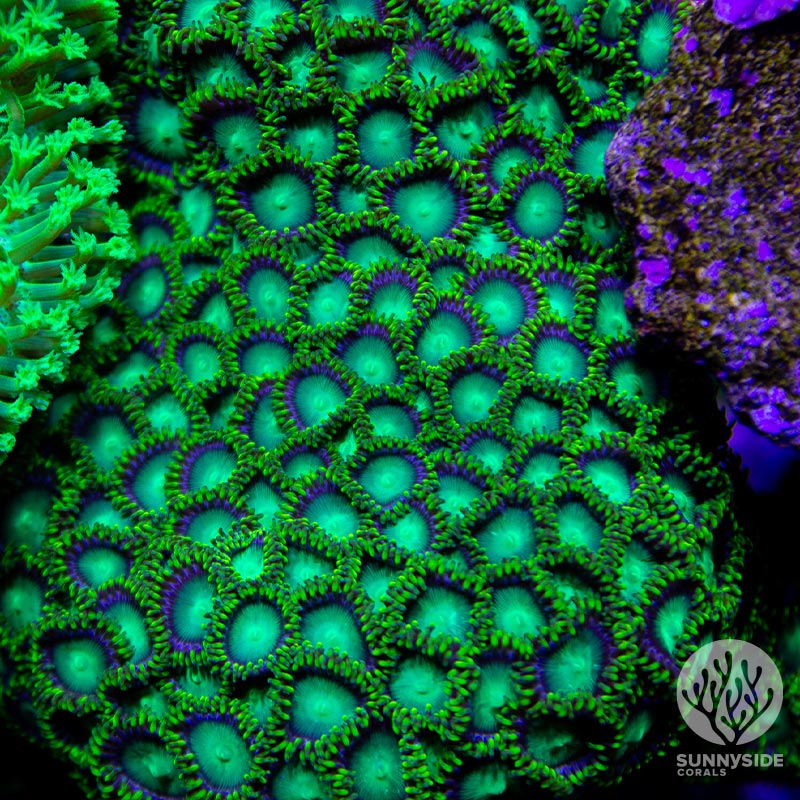
When Can I Add Zoas to My Tank?
Zoanthids are one of the easier corals to grow and can be a great starter coral. Most tanks typically can start growing Zoas after 3 to 6 months of setting up your tank. However, this amount of time does vary from tank to tank. We would recommend starting with an easy beginner zoa from our list of beginner corals.
Dry Rock
If you started your tank with dry rock you will most likely have to wait close to 6 months before you will be able to successfully keep anything alive. This is because dry rock can leach phosphate into the water for a very long time. Zoas do well with elevated levels and will be a good coral to test if your tank is ready or not for more coral.
Live Rock
If you started your tank with live rock that process can be dramatically shorter. However, be aware that just because your levels are where they should be, does not mean that your tank is actually ready for any corals. We recommend introducing LPS or Soft corals first with any new system. After having success with LPS and soft coral for a while you can begin to introduce easy SPS corals like montipora. Acros should be the last thing you try to add in your system.
Zoanthid FAQs
What are Zoanthid corals?
Zoanthids are soft corals found in tropical and sub-tropical reefs. Often a favorite among beginner hobbyists because of their adaptability and stunning colors.
How do I know if my Zoanthid coral is healthy?
Each zoanthid looks different and can even differ from tank to tank. It is all dependent on water parameters, flow, and lighting. If your zoa is healthy, it will have strong coloration with its skirt fully extended. The actual polyp will be fully extended as well.
When to add Zoanthids?
most tanks typically can start growing Zoas after 3 to 6 months of setting up your tank. However, this amount of time does vary from tank to tank.
Where to place Zoanthids?
Make sure to place your Zoas close to the bottom or middle of your tank where it is not receiving too much light. Typically somewhere where the Zoa can receive indirect flow is best, not directly under a pump.
How to acclimate Zoanthids?
Acclimating new Zoanthids can increase the rate of survival. It only takes a few minutes to do and is well worth it.
1) While still in the bag, place your coral inside of your tank to float for 10 minutes. This allows the water temperature in the bag to become consistent with your tank water.
2) Remove your coral from the bag and place the coral and the water inside in a clean bucket designated for aquarium use.
3) Fill your bucket with 50% water from your tank and 50% water from the bag (use all of the water from the bag).
4) Now is the perfect time to treat your coral with a coral dip in order to get rid of any unwanted hitchhikers.
5)After dipping and rinsing off your coral, you can place your coral in your tank. We recommend placing corals lower in your tank and moving them up slowly to find a happy spot in your tank. Every coral on our site has instructions on recommended placement requirements. Please, refer to the product page for specific requirements.
How to dip Zoanthids?
We recommend that you use Bayer Advanced Complete Insect Killer when dipping Acros. It does the best job with the least amount of harm to your corals in our experience.
Are Zoas easy to keep?
Zoas are a great way to get your feet wet with live coral. As technology advances, maintaining a healthy tank is increasingly easy. Once you get your system running smoothly and it is stable you can grow Zoas fairly easily.
Are Zoa coral toxic?
Some zoas have and can release a toxin called palytoxin. This toxin is not present in all zoas, making many of them safe for hobbyists to handle. However, it is always better to follow safety procedures to avoid any issues. ear gloves and eyewear when handling zoas and palys and avoid open cuts or touching your eyes. Never boil zoas or palys as this is the number one way to get palytoxin poisoning.
How fast does Zoa coral grow?
Each zoa grows at a different rate. Many factors can change growth rate as well such as flow, lighting, water parameters and zoa type. Many of the more expensive zoas are slow growing and also have a risk of “melting” or disappearing when unhappy. Cheaper zoas tend to be faster growers and more resistant to changes in your tank.
